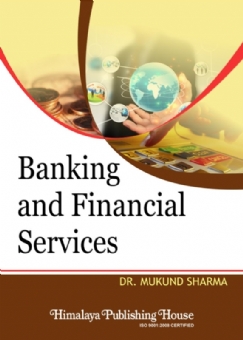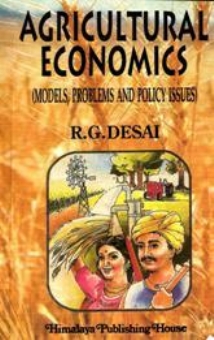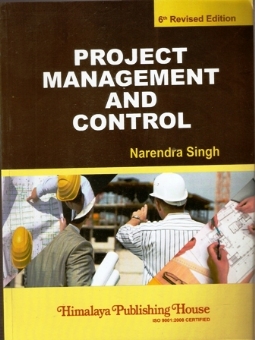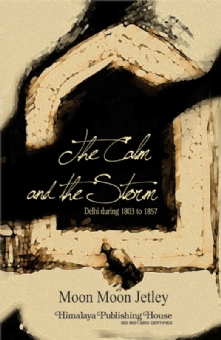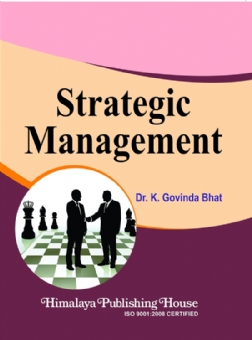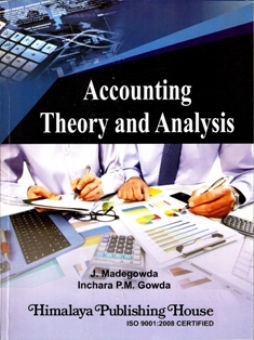The second revised edition of this book was published in the year 2008 and the third revision was long overdue. In recent years, organisations have put much more emphasis on operations management because of international competition, improved manufacturing and service processes and customer demand for higher product and service quality. The most important factor has been the recognition that an organisation can only be successful if it delivers the products and services that its customers want.
This book takes a logical path, through following the decisions made in an organisaton. The first chapter gives an overall introduction to the subject while chapter 2 discusses the strategic context for all other decisions. The next three chapters discuss Demand-forecasting, Design of Production/Operations System and Production Technology and Technology Management in that order. Chapter 6, 7 and 8 discuss Long Range Capacity Planning, Facility Location and Layout and Design of Work Systems. Once the production system is in place, the organisations must turn to more detailed planning which is described in chapters 9 to 13. Chapters 14, 15 and 16 discuss Management of Project, Quality and Maintenance Functions. Chapters 17 to 21 are concerned with Materials Management Functions. Chapters 22 to 24 discuss modern concepts of Just-in-Time Systems, Supply Chain Management and Enterprise Resource Planning. Chapter 25 discusses International Operations Management. Chapter 26, 27 and 28 discuss new topics viz., Total Quality Management, World-Class Manufacturing and Lean Production System Design respectively.
The added features of this revised and enlarged edition are: Objective Questions, Review Questions, Discussion Questions and Chapter Cases in addition to the existing features such as Learning Objectives, Side Notes, Exhibits, Box Illustrations, Tables, Annexures and Subject Index.
Contents :
1 : INTRODUCTION TO PRODUCTION AND OPERATIONS MANAGEMENT
Part A : Introduction to Production Management: Meaning of “Production”, Nature of Production, Production as a System, Production Function, Objectives of Production Management, Production Management and Operations Management, Decision making in Production/Operations management, Organising to produce Goods and Services, Functions of Production Managers, Problems of Production Management, Historical Evolution of Production Management, Characteristics of Modern Production and Operations Function, Why be Interested in Study?, Recent Trends in Production/Operations management. Part B: Introduction to Operations Management: Nature of Operations Management, Operations Management and Competitive Advantage, Scope of Operations Management, Issues in Operations Management, Sourcing and Vertical Integration, The Arguments To Make and To Buy, Facilities Location, Standardisation of Production Facilities, Contract Manufacturing, Strategic Role of Foreign Plants, Supply Chain Management, Materials Management, Managing Service Operations, Quality Standards, Total Quality Management (TQM), Six Sigma, Quality Certification, ISO 9001:2008, R & D Establishments, Objective Questions, Review Questions, Chapter Case.
2 : STRATEGIC OPERATIONS MANAGEMENT
Nature of Strategic Management, Strategic Management Process, Corporate Level Strategy, Functional Level Strategy, Distinctive Competencies, Importance of Strategic Management, Role of Operations Management in Strategic Management, Productivity as a Measure of Effectiveness of the Operations Strategy, Building Production/Operations Strategy on Competitive Priorities, Elements of Production\ Operations Strategy, Strategic Management in Service Industry, Objective Questions, Review Questions, Discussion Questions, Chapter Case.
3 : DEMAND FORECASTING
Need of Demand Forecasting, Forecasting Time Horizons, Types of Forecasts, Features common to all forecasts, Elements of a Good Forecast (or Requirements of a Good Forecast), Objectives of Demand Forecasting, Short Range Objectives, Medium or Long-Range Objectives, Steps in the Forecasting Process, Overview of Qualitative Methods, Overview of Quantitative Methods, Time Series Forecasting Methods, Decomposition of a Time Series, Techniques for Averaging, Selection of Smoothing Constant (α), Exponential Smoothing with Trend Adjustment, Illustration of Trend adjusted Exponential Smoothing Method, Trend Projection Method (TPM), Causal Forecasting Methods (or Associative Forecasting Methods), Economic Forecasting Model, Some Reasons for Ineffective Forecasting, Monitoring and Controlling Forecasts, Implication of Tracking Signal, Illustration, Solved Problems, Objective Questions, Review Questions, Discussion Questions, Problems, Chapter Case.
4 : DESIGN OF PRODUCTION AND OPERATIONS SYSTEM
Part A : Product Planning and Development: What is a Product?, Need for Product Planning and Development, What is Product Planning and Development?, What is a New Product?, Objectives of Product Planning and Development, Why Product Planning and Development is Important?, Characteristics of Successful Product Development, Role of Production Management in Product Development, The Challenges of Product Development, New Product Development Strategy, New Product Development Process, Approaches to speed up New-Product Development, The Product-Life Cycle Concept, Factors to be considered in Product Development. Part B – Product Design: Product design, Process Design and Production Design, Importance of Product Design, What does Product Design do?, Reasons for Product Design or Redesign, Objectives of Product Design, Factors Influencing Product Design, Characteristics of Good Product Design, The Product Design Process as a part of Product Development Process, Sources of Ideas for Designing New Products or Redesigning the Products, Stages in product design, Design Documents for Production, Effect of product design on product cost, Tools and Techniques of Product Design and Development, (i) Standardisation, What is a Standard?, Types of Standards, Product Standardisation, Advantages of Standardisation, Disadvantages of Standardisation, (ii) Simplification, Advantages of Simplification, Standardisation Versus Simplification, (iii) Diversification, Reasons for Diversification, Types of Diversification, Advantages of Diversification, Disadvantages of Diversification, (iv) Automation, Other Issues in Product Design. Part C : Process Management: What is a Process?, Process Planning, Framework for Process Design, Process Selection,, Process Management, Major Process Decisions, Make-or-buy Decisions, Make-or-buy Analysis, Examples in Make-or-Buy Analysis, Outsourcing, Procedure for process planning and design, Selection of Specific Equipments, Process Design, Scope of Process Design, Basic Factors affecting Process Design, Major Factors affecting Process Design Decisions, Nature of Product / Service Demand, Degree of Vertical Integration, Product/Service and Volume Flexibility, Degree of Automation, Level of Product/Service Quality, Degree of Customer Contact, Interrelationship among product design, process design and inventory policy, Process Analysis and Process Flow Design, Purpose of Process Charts, Types of Process Charts, Process Reengineering, Process Improvement, Solved Problems, Objective questions, Review Questions, Discussion Questions, Problems, Chapter Case.
5 : PRODUCTION PROCESSES, PRODUCTION TECHNOLOGY AND TECHNOLOGY MANAGEMENT
[A] Production Processes: Manufacturing Operations and Service Operations, Manufacturing Operations, Selection of a Process, Forming Processes, Machining Processes, Assembly Processes, Non-Manufacturing or Service Operations, Differences between Manufacturing and Service Operations, Classification of Manufacturing Processes, Processing, Treatment, Fabrication, Heat Treatment Processes, Purpose of Heat Treatment, Methods of Heat Treatment, Heat Treatment of Non-ferrous Metals, Surface Treatment of Metals, Cleaning of Metals, Finishing of Metals, Metallic Coatings, Plastic Coatings, Manufacturing Operations as Conversion Processes, Characteristics of Modern Manufacturing, (i) Specialisation, (ii) Mechanisation, (iii) Use of Technology of Industrial Engineering, (iv) Increasing use of Computers and Data Processing Equipments, (v) Use of the Scientific Method, Operations in the Service Sector, Services Versus Goods, Primary Characteristics of Services, Production of Goods (Manufacturing) versus Service Operations, Similarities Between Manufacturing and Services, The Challenges Facing Operations Managers. [B] Production Technology and Technology Management: Meaning of Technology, Role of Technology in Production and Operations Management, Classification of Technology, The Choice of Technology, Primary Areas of Technology, Product Technology, Process Technology, Information Technology, Other Areas of Technology, Design Technology, Production or Manufacturing Technology, Virtual Reality Technology, Disruptive Technology, Advanced or High-tech Production Technology, Design Technology, Computeraided Design (CAD), Computer-aided Design and Manufacture (CAD/CAM), Standard for the Exchange of Product Data (STEP), Virtual Reality Technology, Production Technology (or Manufacturing Automation), Numerical Control and Computer Numerical Control, Automated Process Controls, Vision System (Automated Inspection Systems), Robots, Automated Identification Systems (AIS), Automated Storage and Retrieval Systems (ASRS), Automated Guided Vehicles (AGVs), Automated Flow Lines, Automated Assembly Systems, Flexible Manufacturing System (FMS), Computer Integrated Manufacturing (CIM), Enterprise Resource Planning (ERP) Systems, Automation Issues, 1. High-tech, Mid-tech or Low-tech Production, 2. Building Manufacturing Flexibility, 3. Justifying Investments in Automation, 4. Deciding among Automation Alternatives, 5. Managing Technological Change, Advantages and Disadvantages of Automation. [C] Management of Technology : Technology and the Manager, Role of Technology in Improving Business Performance, Role of Information Technology in Production/Operations Management, Components of Information Technology, Creating and Applying Technology, Technology Fusion, Technology Strategy, Technology as a Competitive Advantage, Technology Choice, Guide Lines to Implementation of Technologies, Technology Integration, Managing Technological Change, Consequences of Industrial Automation, Deciding on Automation Alternatives, Managing Technology in a Global Environment, Objective Questions, Review Questions, Discussion Questions, Chapter Case.
6 : LONG-RANGE CAPACITY PLANNING
Capacity planning, Importance of Long-term or Long-range Capacity Planning, Long-Range Capacity Planning, Estimating the Capacities of Current (or Existing) Facilities, Determinants of Effective Capacity, Forecasting Long-term Future Capacity Demand, Identifying and Analysing Sources of Capacity to Meet Future Capacity Needs, Economies and Diseconomies of Scale, Developing Capacity Alternatives, Selecting from Among the Alternative Sources of Capacity (or Capacity Alternatives), Objective Questions, Review Questions, Discussion Questions, Chapter Case.
7 : FACILITY LOCATION AND FACILITY LAYOUT
[a] Facility Location : Introduction, Location Theories, Freedom of Location, STRATEGIC ISSUES, Need for Location, Errors in Selection, Steps in Location Selection, 1. Deciding on Domestic or International Location, 2. Selection of Region, 3. Selection of Community, 4. Selection of the Site, Relative importance of Location Factors, Village, Suburban or City Site, Location Models, Factor Rating Method, Point Rating Method, Locational Break-even Analysis, Qualitative Factor Analysis Method, Location Options, Solved problems. [B] Facility Layout : Meaning, Definition and Scope, Objectives of a Good Layout, Factors Influencing facility Layout, Principles of Layout, Types of Layout, Process Layout, Product Layout, Cellular Manufacturing (CM) Layout, Combined Layout (or Group Technology Layout or Hybrid Layout), Service Facility Layout, Special Arrangements for Particular Types of Plants, Arrangement of Other Facilities, Location of Receiving and Shipping Departments, Storage, Inspection, Maintenance, Employee Facilities, Other Facilities, Importance of facility Layout, Revision of Layout, Reasons for Revision, Layout Planning, Layout Tools and Techniques, Analysing Layouts with Computers, Layout or Building?, Criteria for Selection and Design of Layouts, 1. Travel Chart Method, 2. Load-distance Analysis Method, 3. Systematic Layout Planning, Layout Design Procedure, Objective Questions, Review Questions, Discussion Questions, Problems, Chapter Case.
8 : DESIGN OF WORK SYSTEMS
Work Study, Method Study and Measurement, Importance of Work Study, Definition of Work Study, Objectives of Work Study, Benefits of Work Study, Relationship of Time and Motion Study to Work Study, Basic Work Study Procedure, Method Study or Methods Analysis, Objectives of Method Study, Advantages of Method Study, Factors Facilitating Method Study, Method Study Procedure, Recording Techniques Used in Method Study, Process Charts used in Method Study, Motion Study, Motion Economy and Work Efficiency, Work Measurement, Principles of Motion Economic, Memo motion Study, Steps in Work Sampling, Principles Involved in Work Sampling, Advantages of Work Sampling over Conventional Work Measurement Methods, Limitations of Work Sampling, Productivity and employees, Meaning and Importance, Measuring Productivity, Labour Productivity, Ways of Improving Productivity, Solved problems, Objective Questions, Review Questions, Discussion Questions, Problems, Chapter Case.
9 : PRODUCTION / OPERATIONS PLANNING AND CONTROL
Classification of Production Planning and Control functions, Production Planning (or Operations Planning), Factors determining Production Planning Procedures, (i) Volume of Production, (ii) Nature of Production Processes, (iii) Nature of Operations, Production Planning System, Production Control, Importance of control Function, Benefits of Production Control, Elements of Production Control, Production Control System, Factors Determining Production Control Procedures, Production Planning / Operations Planning and Control, Objectives of Production Planning and Control, Role of Production Planning and Control in Operations Management, Scope of Production Planning and Control, Principles of Production Planning and Control, Phases in Production Planning and Control Function, Main Functions of Production Planning and Control Department, Levels of Production Planning, Production Planning Functions, 1. Estimating, 2. Routing, 3. Scheduling, 4. Loading, Production Control Functions, 1. Dispatching, 2. Expediting / Follow-up / Progressing, Benefits of Production Planning and Control Function, Limitations of PPC, Measuring Effectiveness of PPC Function, Production Planning and control in different Production Systems, 1. PPC in Job Production, 2. PPC in Batch Production or Inermittent Production, Characteristics of PPC Function in Intermittent or Batch Production, 3. PPC in Continuous Production, 4. Production Planning and Control in Process Industry, Organisation of PPC Department, Routing, Benefits of Routing, Scheduling and Loading, Objectives of Scheduling, Elements of Scheduling, Problems in Scheduling, Types of Scheduling, Dispatching, Centralised and Decentralised Dispatching, Progressing (or Expediting or Follow-up), Documents Concerned with PPC Functions, Objective Questions, Review Questions, Discussion Questions, Chapter Case.
10 : AGGREGATE PLANNING AND MASTER PRODUCTION SCHEDULING
Aggregate Planning, Operations Planning and Scheduling Systems, Aggregate Production (output) Planning, Inputs to and Outputs from Planning, Importance of Aggregate Plans, Aggregate Planning or Aggregate Capacity Planning, Need for Aggregate Capacity Planning, Steps in Aggregate Capacity Planning, Costs Associated with Aggregate Planning, Approaches to Aggregate Planning, Top down Aggregate Planning, Bottom-up Aggregate Planning, Rough-cut Capacity Planning, Capacity Planning and Capacity Requirement Planning (CRP), Definition of Production Capacity, Types of Capacity, Measurement of Capacity, Capacity Decisions, Determination of Capacity, Factors Affecting Determination of Plant Capacity, Interrelationship Between Capacity and Other Issues, Capacity Planning, The Need for Capacity Planning, Capacity Planning Decisions, Classification of Capacity Planning, Long-term and Short-term Capacity Planning, Finite and Infinite Capacity Planning, Factors Affecting Capacity Planning, Ways of Changing Capacity, Capacity Requirement Planning (CRP), Capacity Requirement Planning (CRP) Process, CRP Inputs, CRP Outputs, Master Production Scheduling, Objectives of Master Production Scheduling, Functions of Master Production Schedule, Time Interval and Planning Horizon for MPS, Time Fences in Master Production Schedules, Procedure for Developing MPS, Guidelines for Master Scheduling, Updating of MPS, MPS in Produce-to-stock and Produce-to-order Firms, Length of Planning Horizon of MPS, Symptoms of a Poorly Designed MPS, Solved problems, Objective Questions, Review Questions, Discussion Questions, Chapter Case.
11 : RESOURCE REQUIREMENTS PLANNING
Resource Requirements Planning, Resource Requirements Planning System, Material Requirements Planning (MRP or MRP-I or mrp), Objectives of MRP, Purpose of MRP, Advantages and Disadvantages of MRP, Manufacturing Resource Planning (MRP-II), General Overview of MRP (Material Requirements Planning), Operation of the MRP System, MRP System Inputs, MRP System Outputs, Definitions of Terms used in MRP System, Questions Answered in MRP Processing, The MRP Computational Procedure, MRP Inputs, Issues in MRP, Potential Benefits from MRP, Implementation of MRP, Problems in Using MRP, Problems in Designing the MRP System, Problems in Managing the MRP System, Evaluation of MRP, Manufacturing Resource Planning (MRP II), Evolution of MRP II, MRP In Services, Distribution Requirement Planning (DRP), Distribution Resource Planning, Enterprise Resource Planning, What is ERP?, Functioning of ERP, Features of ERP, Scope of ERP, Benefits of ERP, Application of ERP, Selection of ERP Package, Solved Problems, Objective Questions, Review Questions, Discussion Questions, Problems, Chapter Case.
12 : SERVICE OPERATIONS : PLANNING AND SCHEDULING
(i) Type of Service Design, (ii) Type of Production Process, (i) Quasi-manufacturing, (ii) Customer-as-participant, (iii) Customer-as-product, Scheduling for Services, Special Problems in Scheduling Services, (i) Schedule for Peak Demand, (ii) Chase Demand, Other Possible Strategies, (i) Reservation Strategy, (ii) Consumer Participation, (i) Product focused Operations, (ii) Process Focussed Operations, Personnel Scheduling in Services, Waiting Lines in Service Operations, Characteristics of Waiting Lines, (i) Hospitals, (ii) Banks, (iii) Airlines, Steps involved in Cyclical Scheduling, Work force scheduling for services, Objective Questions, Review Questions, Discussion Questions, Chapter Case.
13 : SHOP FLOOR PLANNING AND CONTROL
Moving from Plans to Reality, Objectives of Production Activity Control, Operations Planning and Scheduling, Shop Floor Planning and Control, Scheduling, Objectives of Scheduling, Managerial Considerations in Scheduling, Elements of Scheduling, Information Needed for Scheduling Process, Problems of Scheduling, Scheduling Process – Focused Production Systems, Scheduling Techniques for Job Shop, Stages in Scheduling, Load Charts and Machine Loading Charts, Priority Sequencing, Single-Criterion Priority Sequencing Rules, Dynamic Sequencing Rules (Combined Criteria Rules), Scheduling ‘n’ jobs on ‘m’ Machines (m = 2 or 3), Illustrations, Johnson’s Rule or Algorithm, Batch Scheduling, Complexities of EBQ Scheduling, LOB Technique, Benefits of LOB Technique, Controlling Continuous Production, Line Balancing Procedure in Assembly Layouts, Determination of the Ideal or Theoretical Minimum Number of Workers Required in the Line, Objective Questions, Review Questions, Discussion Questions, Problems, Chapter Case.
14 : PROJECT MANAGEMENT
Project Management, Nature of Projects, Project Life Cycle, Importance of Project Management, Project Organisation Key Decisions in Project Management, The Role of a Project Manager, Project Planning and Control Techniques, Project Planning, Project Scheduling, Project Control, Network Fundamentals, Commonly used Network Symbols, Terms used in Network Based Scheduling Techniques, Networking Conventions, Programme Evaluation & Review Technique (PERT) and Critical Path Method (CPM), Critical Path Method (CPM), CPM – Time Analysis, Programme Evaluation and Review Technique (PERT), Determining Probability of Meeting Scheduled Date in PERT Analysis, Crashing CPM Networks, Comparison of PERT and CPM Methods, Applying Project Scheduling to Service Firms, Evaluation of PERT and CPM, Use of Computers in Project Management, Solved Problems, Objective Questions, Review Questions, Discussion Questions, Problems, Chapter Case.
15 : QUALITY MANAGEMENT
Inspection and Quality Control, Objectives of Inspection, Scope of Inspection, Sampling Inspection Versus 100 Per cent Inspection, Patrol or Floor Inspection Versus Centralised Inspection, Some Issues in Inspection, How Much to Inspect and How Often?, Where to Inspect in a Process, Benefits of Quality Control, Organisation for Quality Control, Ensuring Quality, SQC for Process Control, Acceptance Sampling, Advantages of SQC, Construction of Control Charts, Construction of X – R (Mean-range chart) (for variable quality characteristics), Illustration of Construction of X – R Chart, Calculation of Mean (X) and Range (R), Test for Homogeneity, Control Charts for Attributes, Acceptance Sampling by Attributes, Average Outgoing Quality (AOQ) Curves, Operating Characteristic (OC) Curves, Ideal O.C. Curve, Design of Acceptance Sampling Plans, Types of Acceptance Sampling Plans, Illustration of Design of Single Acceptance Sampling Plan, Solved Problems, Objective Questions, Review Questions, Discussion Questions, Problems, Chapter Case.
16 : MAINTENANCE MANAGEMENT
Nature of Maintenance and Maintenance Management, Scope of Maintenance, Importance of Maintenance Management, Objectives of Maintenance Management, Types of Maintenance, Breakdown Maintenance or Corrective Maintenance, Preventive Maintenance, Predictive Maintenance, Routine Maintenance, Planned Maintenance, Maintenance Policy, Areas of Maintenance, Planning and Scheduling Maintenance, Scheduling Maintenance Work, Reasons for Maintenance Scheduling, Considerations in Scheduling Maintenance, Problems in Maintenance Scheduling, Maintenance Effectiveness, Trends in Maintenance, Total Productive Maintenance, Guiding Principles of TPM Programs, Solved Problems, Objective Questions, Review Questions, Discussion Questions, Problems, Chapter Case.
17 : FUNDAMENTALS OF MATERIALS MANAGEMENT
Materials Matter More, Materials Management, Scope of Materials Management, Objectives of Materials Management , Primary Objectives, Secondary Objectives, Importance of Materials Management, Materials Management Information System (MMIS), Organising for Materials Management, Objective Questions, Review Questions, Discussion Questions, Chapter Case.
18 : MATERIALS PLANNING AND CONTROL
Significance of Materials Planning, Benefits of Materials Planning, Factors Influencing Materials Planning, Problems Encountered in Materials Planning, Guidelines to be Used for Effective and Reliable Materials Planning, Relationship of Materials Planning with Production Programs and Sales Forecasts, Purpose of Materials Budgets, Benefits of Materials Budgets, Importance of Materials Control, Materials Control Cycle, Objective Questions, Review Questions, Discussion Questions, Chapter Case.
19 : PURCHASING MANAGEMENT
Staff Strength of the Purchasing Department, Titles used for Purchasing Managers, Functions of Purchasing Department, 1. Recognition of Need, 2. Description of Requirement, 3. Selection of Source, 4. Determination of Price and Availability, 5. Placing the Order, 6. Order Acknowledgment, 7. Follow-up and Expediting, 8. Checking The Invoice and Approval, Purchasing Policies, Ancillary Development, Make-or-Buy, Types of Make-or-buy Investigations, Role of Purchasing Manager, Speculative Buying, Vendor Rating, Value Analysis, Ethics in Purchasing, Reciprocity, Purchasing for Employees, Gifts, Solved problems, Objective Questions, Review Questions, Discussion Questions, Problems, Chapter Case.
20 : STORES MANAGEMENT AND MATERIALS HANDLING
Importance, Functions, Storage System, Types of Stores Layout, Stores Manual, Measurement of Stores Efficiency, Principles of Classification and Codification, Methods of Classification and Codification, Definition of Materials Handling, Scope of Materials Handling, Importance of Materials Handling, Objectives of Materials Handling, Materials Handling Principles, Materials Handling Costs, Unit Load Concept, Flow Pattern, Factors for Consideration in Planning Material Flow, Conveyers, Cranes, Elevators and Hoists, Industrial Trucks, Auxiliary Equipments, Miscellaneous Handling Equipments, Objective Questions, Review Questions, Discussion Questions, Chapter Case.
21 : INVENTORY MANAGEMENT
Factors Influencing Inventory Management and Control, Type of Product, Type of Manufacture, Volume of Production, Benefits of Inventory Management and Control, Step 1. Determination of Optimum Inventory Levels, Step 2. Determination of Degree of Control, Step 3. Planning and Design of the Inventory System, Fixed Order Quantity System or ‘Q’ System, Fixed Order Period System or ‘P’ System, Mathematical Approach to the Design of ‘Q’ System and ‘P’ System, Step 4. Determining Organisational Arrangement Structure, HML Classifications, VED Classification, SDE Classification, FSN Analysis, SOS Analysis, XYZ Analysis, GOLF Analysis, Economic Order Quantity, Weaknesses of EOQ Formula, Order Point Problem, Minimum-Maximum Technique, Two-Bin Technique, Solved problems, Objective Questions, Review Questions, Discussion Questions, Problems, Chapter Case.
22 : JUST-IN-TIME SYSTEMS
Lean Production and JIT, Just-in-time Philosophy, Waste Reduction and Variability Reduction, History and Development of JIT System, Importance of JIT System, Relevance of JIT to TQM, Overview of JIT manufacturing, An Ideal Production System and JIT Production, JIT Manufacturing Versus JIT Purchasing, Pre-requisites for JIT Manufacturing, Elements of a JIT Manufacturing System, Benefits of JIT System, Major Tools and Techniques of JIT Manufacturing, Potential Problems in Implementing JIT, Planning a Successful Conversion, Obstacles to Conversion, JIT in Services, Implementation of JIT in Services, Strategic Implication of JIT System, Operational Benefits of JIT Systems, Objective Questions, Review Questions, Discussion Questions, Chapter Case.
23 : SUPPLY CHAIN MANAGEMENT
Materials Management, Supply Chains, Objectives of a Supply Chain, Activities Involved in Supply Chain Management, Suppliers, Evaluating Sources of Supply (Vendor Analysis), Logistics, Evaluating Shipping Alternatives, Innovations in Logistics, Warehousing, Contemporary Developments in Warehousing, Strategy 1 : Multiple Suppliers, Strategy 2 : Few Suppliers, Strategy 3 : Vertical Integration, Strategy 4 : Keiretsu Network, Strategy 5 : Virtual Companies, Coordination in the Supply Chain, Measuring Supply Chain Performance, Structural Improvement, Improvements in Infrastructure, Virtual supply chain, Objective Questions, Review Questions, Discussion Questions, Chapter Case.
24 : ENTERPRISE RESOURCE PLANNING
What is Enterprise Resource Planning? (ERP), Evolution of ERP, An ERP System, Advantage of ERP Systems, Disadvantages of ERP Systems, An Example of ERP System-SAP R/3, ERP Implementation, ERP Implementation Life Cycle, 1. Pre-evaluation Screening, 2. Package Evaluation, 3. Project Planning, 4. Gap Analysis, 5. Reengineering, 6. Configuration, 7. Training of implementation team, 8. Testing, 9. End User Training, 10. “Going-live”, 11. Post implementation, WEB based ERP and Related E-Business Software, Customer Relationship Management (CRM), Supply Chain Management (SCM), Collaborative Product Commerce (CPC), Objective Questions, Review Questions, Discussion Questions, Chapter Case.
25 : INTERNATIONAL OPERATIONS MANAGEMENT
International Operations Management Compared with Domestic Operations Management, Sourcing and Vertical Integration, Arguments to Make and to Buy, Outsourcing, Facilities Location, Country Factors, Technology Factors, Product Factors, Government Policies, Organisational Issues, Recent Trends in Location, Standardisation of Production Facilities, Contract Manufacturing, Supply Chain Management, Managing Service Operations, International Quality Standards, Total Quality Management (TQM), Quality Certification, Quality System, Internationalisation of R & D, Managing Technology Transfers, Objective Questions, Review Questions, Discussion Questions, Chapter Case.
26 : TOTAL QUALITY MANAGEMENT
Three Levels of Quality, Determinants of Quality, Deming’s 14 Points for Quality Management, Deming’s Seven Deadly Diseases and Sins, Deming Wheel/Deming Cycle/P–D–C–A Cycle, Deming’s Triangle (3Axioms), 2. Joseph Juran (USA), Quality Triology, Crosby’s 14 Steps for Quality Management, Elements of TQM Concept, Total Quality Management Program, Environmental Aspects in Product Standards, The Kaizen Philosophy, Requirements for a Successful Kaizen Program, Benefits of Kaizen, Kaizen and Deming, Concept of Six Sigma Quality, Six-Sigma Process Capability, Ten Principles of Six-Sigma, Fundamental Six-Sigma Practices and Applicable Tools, Objective Questions, Review Questions, Discussion Questions, Chapter Case.
27 : WORLD CLASS MANUFACTURING – AN OVERVIEW
Becoming World-Class, World Class Manufacturing, Global Competitiveness, Competitive Priorities of Manufacturing, Changing Competitive Priorities, Hallmarks of Excellence, Time-Based Competition, Origin of Time-Based Competition, From Just-in-Time to Time-Based Competition, Benefits of Time-Based Competition, World-Class Suppliers, Choosing Suppliers, Evaluating Sources of Supply, Supplier Audits, Supplier Certification, Supplier Partnerships, World-Class Customers, Characteristics of World-Class Customers, Today’s Global Business Conditions, Manufacturing/Operations Strategy, Forecasting in Operations Management, Designing and Developing Products and Production Process, Production Technology – Selection and Management, Long-Range Capacity Planning and Facility Location, Facility Lay-out, Aggregate Planning and Master Production Scheduling, Independent Demand Inventory Systems, Resource-Requirement Planning, Shop-floor Planning and Control in Manufacturing, Planning and Scheduling Service Operations, Just-in-time Manufacturing, Supply-Chain Management, Productivity, Teamwork and Empowerment, Quality Management, Quality Control, Maintenance Management and Reliability, Path of World-Class Manufacturings, World-Class Manufacturing Strategy, World-Class Service Delivery, Road to World-Class Performance, World Class Companies in the 21st Century, Principles-based Management, Objective Questions, Review Questions, Discussion Questions, Chapter Case.
28 : LEAN PRODUCTION SYSTEM DESIGN
Introduction, What is Lean production?, Lean Production – A Conceptual Definition, Benefits of Lean Production, Advantages and Disadvantages of Lean Production, What is Lean Production System?, Lean Production Systems Eliminate Wastes, Key Features or Principles of Lean Production, Features of Lean Production, Why Lean Production?, History of Lean Production, Lean Production Overview, Comparison of Batch Production, Mass Production and Lean Production, Lean Production and Just-in-time Production, Basic Elements of Lean Production System, 1. Flexible Resources, 2. Cellular Layouts / Cellular Manufacturing, 3. Pull Production System, 4. Kanban Production Control, Benefits of Kanban System, 5. Small-lot Production, 6. Quick Set-ups, Benefits from Simplified Set-ups, Set-up – Reduction Methodology, SMED Methodology for set-up Reduction, Techniques for Set-up Reduction, (i) Separating Internal and External Activities, (ii) Improving Internal Set-ups, (iii) Improving External Set-ups, (iv) Abolishing the Set-up, 7. Uniform Production Levels (Production Smoothing), 8. Quality at the Source (Jidoka), 9. Total Productive Maintenance, Evolution of Maintenance Methods, 10. Supplier Networks, Lean Supplier Management, Group technology and Lean production, Lean production versus agile manufacturing, Lean Production versus ERP systems, Manufacturing Planning and Control Systems, Lean Production VS ERP Systems, Lean Production versus total quality management, Comparision between Lean production and total quality management, Lean Production and six sigma integration (lean six-sigma), Lean Six-Sigma, Combining Lean and Six-Sigma, Lean Production Systems, Design of Production Systems, Lean Production System Design, Production System Design, Lean Production Systems in Practice, The Basic Pillars of Lean Production Systems, Objective Questions, Review Questions, Discussion Questions, Chapter Case.
Appendices : Annexure A, B and C
Index


